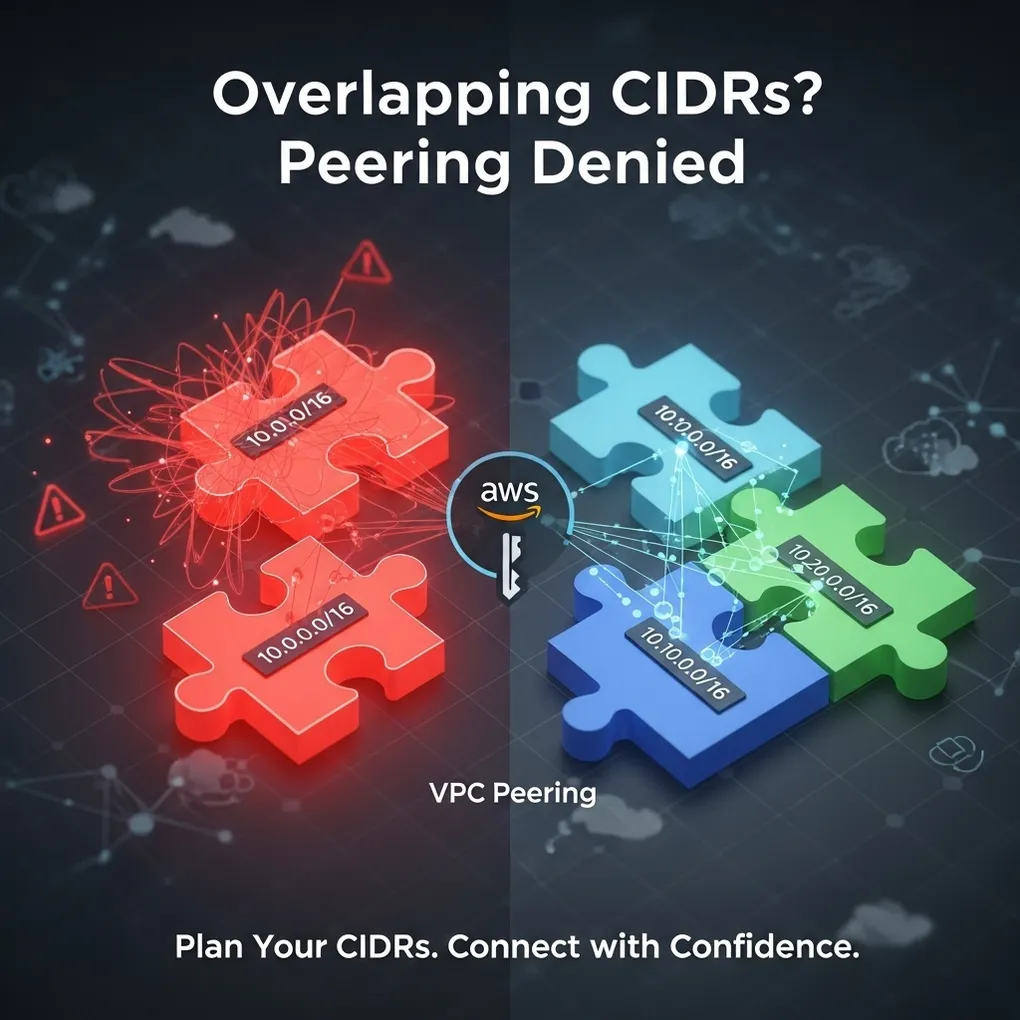
Stop Reusing the Same CIDR Everywhere: VPC Peering Will Bite You
🚨 Are you using the same CIDR blocks across regions, stages, or accounts?
You might want to rethink that.
It’s a common trap: you spin up dev, staging, and prod VPCs across different regions or accounts — all using 10.0.0.0/16 because it works.
Until one day, you need to connect them with VPC Peering.
Overlapping CIDRs = Peering denied.
Now you’re refactoring networks just to connect two environments.
TL;DR
- Reserve non-overlapping CIDRs per region, stage, and account.
- Keep a single source of truth for CIDR assignments in code.
- Add CI guardrails so duplicates never reach
terraform apply. - For many VPCs, prefer Transit Gateway over a mesh of peerings.
- Already overlapping? Use a secondary CIDR to migrate with near zero downtime.
VPC Peering in 60 seconds
- Private connectivity between two VPCs over AWS backbone.
- No NAT, no VPN, no public IPs.
- Not transitive and requires non-overlapping CIDRs.
If you know you’ll connect many VPCs, consider a hub-and-spoke with Transit Gateway (TGW). You still need non-overlapping CIDRs.
Why overlap happens?
- Copy-pasted defaults like
10.0.0.0/16. - Separate teams creating VPCs without a registry or review.
- Growth outpaces initial plans and the range gets reused.
Small choices today become big constraints later.
Design once, scale forever
Pick RFC1918 ranges with room to grow
10.0.0.0/8for most app VPCs gives you plenty of space to segment.- Avoid ranges your corporate WAN or partner networks already use.
- Keep
172.16.0.0/12or192.168.0.0/16for special cases to dodge collisions. - Carve by the dimensions that matter
- Common dimensions: environment, region, account, and sometimes workload family.
Example allocation:
-
Environment blocks
10.0.0.0/12→ dev10.16.0.0/12→ staging10.32.0.0/12→ prod10.48.0.0/12→ shared-services
-
Within each environment block, assign a unique /16 per region
- dev
10.0.0.0/16→us-east-110.1.0.0/16→eu-west-1
- prod
10.32.0.0/16→us-east-110.33.0.0/16→eu-west-1
- dev
-
Subnets inside a VPC are then carved as
/20or/21for AZs and tiers.
Rule of thumb: leave headroom. Under-allocate subnets now so you can grow without moving everything later.